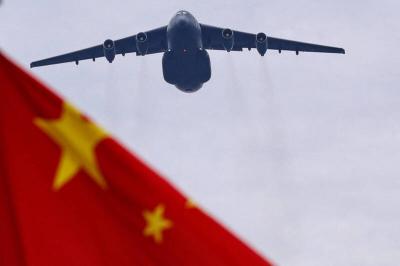The US alliance structure would serve to constrain US President Donald Trump’s ability to negotiate directly with China, US academic Francis Fukuyama said yesterday in Taipei.
“There’s frequently talk about the need for some kind of G2, where the US and China negotiate directly to manage their relationship and I just think that that’s not a realistic outcome,” he said, speaking at a forum on US-China relations organized by former premier Jiang Yi-huah’s (江宜樺) Fair Winds Foundation.
“[This view is] sort of like what the European great powers did in the 19th century, when everyone else was just a colony of a European power and colonies were traded back and forth, but the world isn’t structured like this anymore — the United States has many alliances,” he said. “We don’t have an alliance exactly with Taiwan, but we certainly have a long-standing moral commitment, and you’re not living in a world where the United States is going to go to China and say that because we want X out of you, we’ll give you Taiwan or the East China Sea.”
While Trump is unlikely to abandon the US alliance structure, an attempt to force a renegotiation of cost-sharing might have more credibility than previous US administrations, he said.
“It’s actually very hard to undermine an existing big international institution — I think what’s going to happen is the United States is not going to invest any effort into expanding that set of institutions, and it’s going to continue to keep putting pressure on its allies to pay more,” he said.
While there is still potential for a “grand bargain” with China over allowing South Korea to reunite the Korean Peninsula while withdrawing US troops, Chinese negotiators have so far been unwilling to countenance the potential collapse of North Korea, he said.
Fukuyama also criticized the opposition of former US president Barack Obama’s administration to China’s establishment of the Asian Infrastructure Investment Bank.

Beijing could eventually see a full amphibious invasion of Taiwan as the only "prudent" way to bring about unification, the US Department of Defense said in a newly released annual report to Congress. The Pentagon's "Annual Report to Congress: Military and Security Developments Involving the People's Republic of China 2025," was in many ways similar to last year’s report but reorganized the analysis of the options China has to take over Taiwan. Generally, according to the report, Chinese leaders view the People's Liberation Army's (PLA) capabilities for a Taiwan campaign as improving, but they remain uncertain about its readiness to successfully seize

Taiwan is getting a day off on Christmas for the first time in 25 years. The change comes after opposition parties passed a law earlier this year to add or restore five public holidays, including Constitution Day, which falls on today, Dec. 25. The day marks the 1947 adoption of the constitution of the Republic of China, as the government in Taipei is formally known. Back then the Chinese Nationalist Party (KMT) governed China from Nanjing. When the KMT, now an opposition party in Taiwan, passed the legislation on holidays, it said that they would help “commemorate the history of national development.” That

Taiwan has overtaken South Korea this year in per capita income for the first time in 23 years, IMF data showed. Per capita income is a nation’s GDP divided by the total population, used to compare average wealth levels across countries. Taiwan also beat Japan this year on per capita income, after surpassing it for the first time last year, US magazine Newsweek reported yesterday. Across Asia, Taiwan ranked fourth for per capita income at US$37,827 this year due to sustained economic growth, the report said. In the top three spots were Singapore, Macau and Hong Kong, it said. South

Snow fell on Yushan (Jade Mountain, 玉山) yesterday morning as a continental cold air mass sent temperatures below freezing on Taiwan’s tallest peak, the Central Weather Administration (CWA) said. Snowflakes were seen on Yushan’s north peak from 6:28am to 6:38am, but they did not fully cover the ground and no accumulation was recorded, the CWA said. As of 7:42am, the lowest temperature recorded across Taiwan was minus-5.5°C at Yushan’s Fengkou observatory and minus-4.7°C at the Yushan observatory, CWA data showed. On Hehuanshan (合歡山) in Nantou County, a low of 1.3°C was recorded at 6:39pm, when ice pellets fell at Songsyue Lodge (松雪樓), a